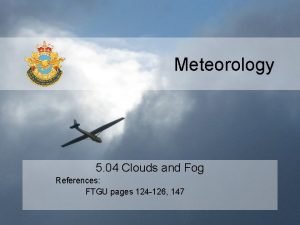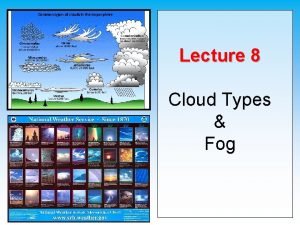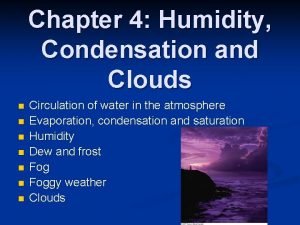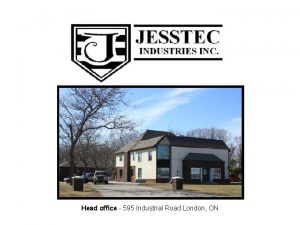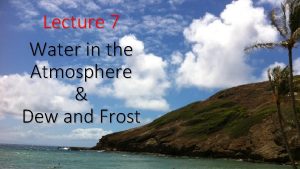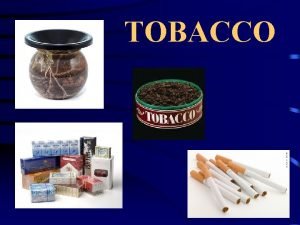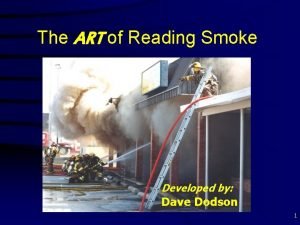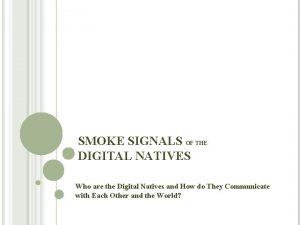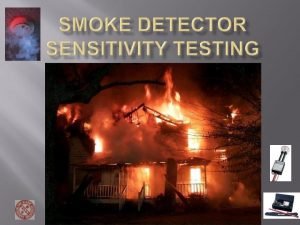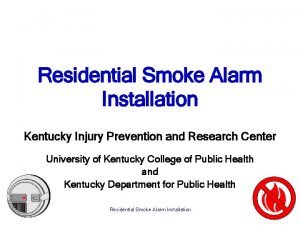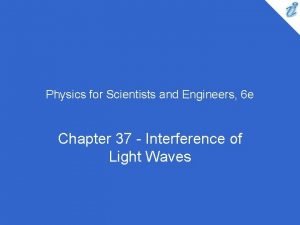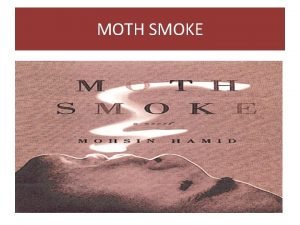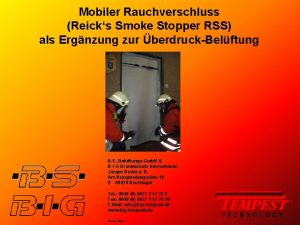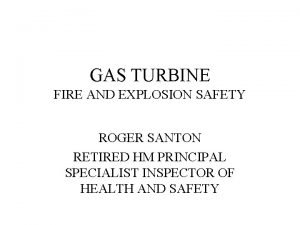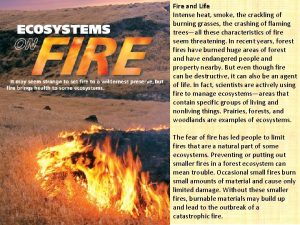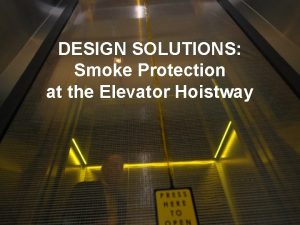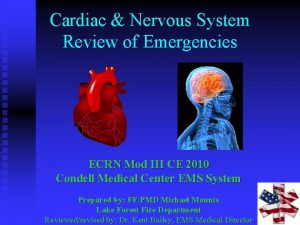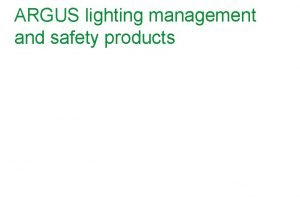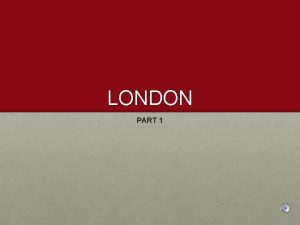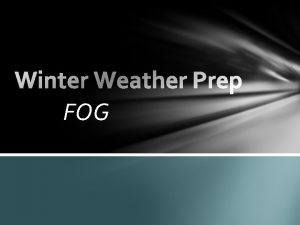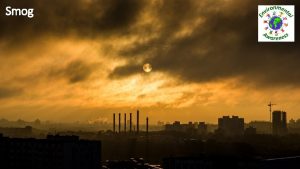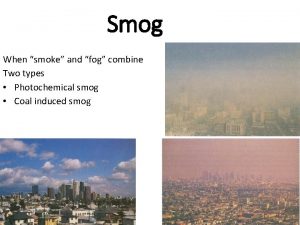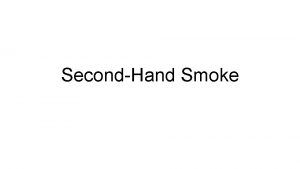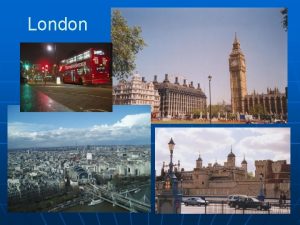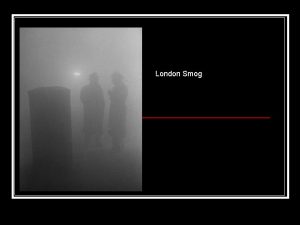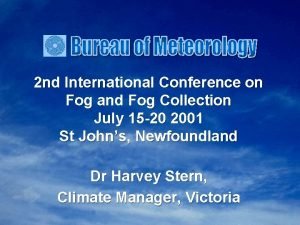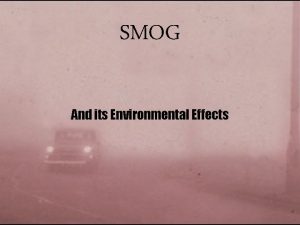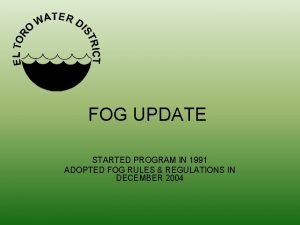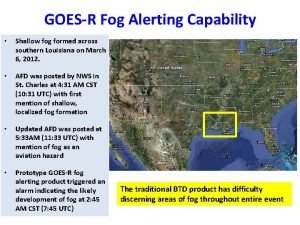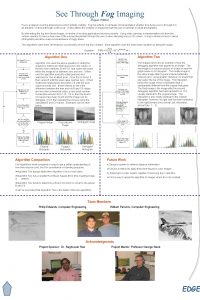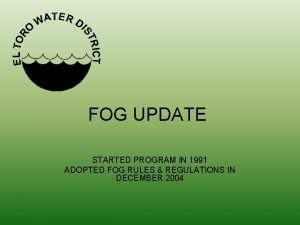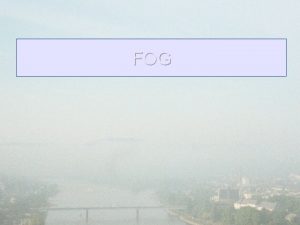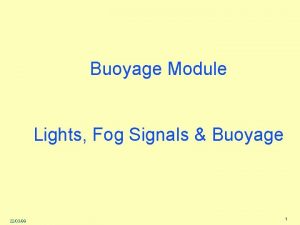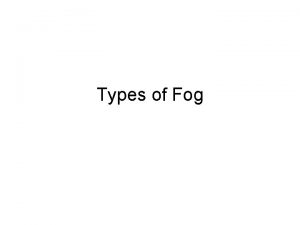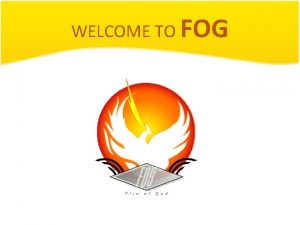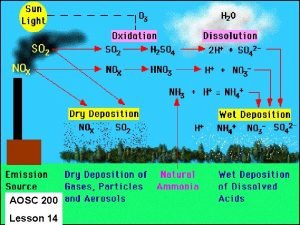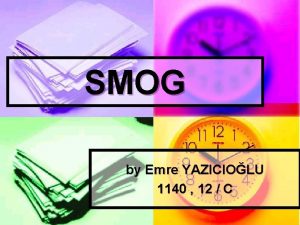Smog Smoke and fog London Smog Industrial smog
























- Slides: 24

Smog • Smoke and fog • London Smog / Industrial smog / reducing smog • Caused by the combustion of sulfur containing coal • Water droplets, SO 2, SO 3, soot, fly ash and sulfuric acid

Reducing Smog • Chicago, Beijing • Cold, wet winters • Thermal inversion traps cold air close to earth surface • Decline in reducing smog • Use of SNG, alkaline scrubber

London Smog

London Smog : SO 2 • water droplets in the air condenses on smoke particles produced by the burning of coal, forming tiny smog droplets. -sulfur dioxide -Sulfur dioxide is a gas that attacks the lungs and makes breathing difficult

SO 2 smog

Photochemical smog Oxidizing smog

• Photochemical smog

Photochemical smog



Photochemical smog • clear, sunny skies • warm temperatures • stable air conditions under a stationary high pressure system • onshore sea-breeze

Pollutant level during the Day

Thermal Inversion

E 10 Thermal Inversion Effects on Air Quality

Thermal Inversion • Gradual decrease in temperature as the altitude increases • Warmer, denser air near the earth surface • Pollutants produced near the surface of the earth move with warm air to the upper atmosphere • Cooler air takes the place of rising warm air near the earth surface

Thermal Inversion • Air currents allow the pollutants to be dispersed • Abnormal temperature arrangement of air masses where a layer of warmer air is trapped between the two layers of cold air • Wind gives horizontal movement of air • Mountains hinders the dispersion • Flow of cold air creates cool layer

Thermal Inversion • No wind, cold temperatures, , mountains • Warmer air acts as lid

Thermal Inversion • a lt it u d e Normal Condition Cooler air Thermal Inversion Cold clean air Warmer air Polluted cold air Warmer air temperature

Smog • Photochemical

Hydroxide radical

• Photochemical Smog

In summary, this is what happens in photochemical smog formation • 1) Nitrogen oxides generate oxygen atoms • 2) Oxygen atoms form hydroxyl radicals • 3) Hydroxyl radicals generate hydrocarbon radicals • 4) Hydrocarbon radicals form hydrocarbon peroxides • 5) Hydrocarbon peroxides form aldehydes • 6) Aldehydes form aldehyde peroxides • 7) Aldehyde peroxides form peroxyacylnitrates

O 3

Ethanol
 Fog types aviation
Fog types aviation Types of fog
Types of fog Advection fog vs radiation fog
Advection fog vs radiation fog Jesstec industries
Jesstec industries Difference between fog and dew
Difference between fog and dew Text tula
Text tula Sidestream smoke
Sidestream smoke Dave dodson art of reading smoke
Dave dodson art of reading smoke Digital smoke signals
Digital smoke signals Smoke eater definition
Smoke eater definition Walter jaeger smoke detector
Walter jaeger smoke detector Smoke in past
Smoke in past Smoke detector use
Smoke detector use If you were to blow smoke into the space
If you were to blow smoke into the space Moth smoke summary
Moth smoke summary Test 04
Test 04 Smoke stopper
Smoke stopper Means of communication
Means of communication Writers use imagery to
Writers use imagery to Fire detection gas turbines
Fire detection gas turbines Is smoke biotic or abiotic
Is smoke biotic or abiotic Elevator smoke protection solution
Elevator smoke protection solution Widowmaker heart attack smoke inhalation
Widowmaker heart attack smoke inhalation Argus smoke detector
Argus smoke detector Use not to smoke in a sentence about staying healthy
Use not to smoke in a sentence about staying healthy
